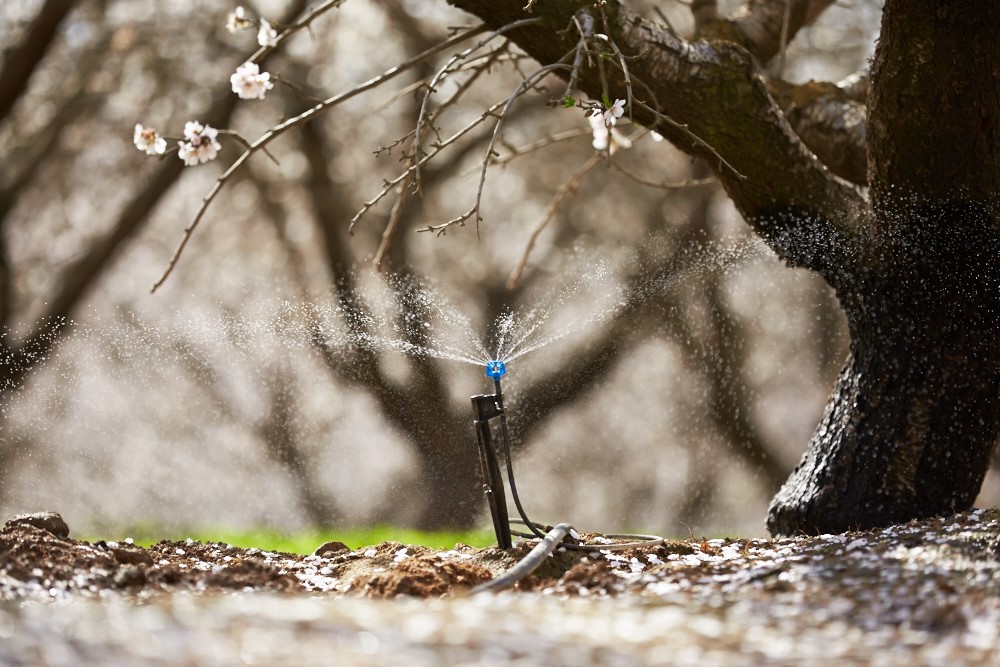The question of when to begin irrigating may be an obvious one, but that doesn’t mean it has an obvious answer. And starting irrigation at the right time not only ensures the almond crop gets the water it needs to grow but also allows you to effectively manage resources – both environmentally and financially. 
“Mother Nature, soil type and moisture levels all have a role to play,” explained Spencer Cooper, senior manager, Irrigation and Water Efficiency, Almond Board of California (ABC). “Almond orchards require a certain amount of water, but where that water comes from is up for careful consideration.”
An orchard’s water requirement is a combination of almond water use—losses from evaporation and transpiration—and water used for other beneficial purposes, such as salt leaching (as necessary) and accounting for irrigation non-uniformity.
In early spring, effective rainfall and stored moisture may cover an orchard’s entire water requirement, meaning growers may be able to postpone applied water via irrigation, at least for a time. In fact, it is not uncommon for these two water sources to supply the entire crop water use in the first month and up to 15% to 35% on a seasonal basis, based on geographical regions.
For precision irrigation and effective utilization of resources, this is an important relationship to understand.
“Imagine meeting orchard water requirements through effective rainfall and available soil moisture, but still irrigating on top of that,” said Cooper. “What’s the cost of running that pump for an extra 12 hours? As growers, we want to be as efficient and sustainable as possible.”
The amount of water available to the orchard through soil moisture and rainfall can vary widely, depending on geography and even local orchard conditions. Growers farther south may have less effective rainfall at the start of the season and, in the Central region, an orchard block may be comprised of sandier soil texture with less water holding capacity compared to another with a more absorbent clay soil texture.
With all the compounding variables in the mix, Cooper encourages growers to leverage tools such as a pressure chamber and the Irrigation Calculator. Developed by the Almond Board and research partners, the Irrigation Calculator generates run time schedules based on local evapotranspiration (ET), weather data and orchard-specific information. ABC also has a factsheet, “Determining When to Begin Irrigating Almonds Using ET, Soil Water Holding Capacity, and Effective Rainfall,” which contains example calculations to support decision making.
“There are so many different variables to consider,” said Cooper, “and when you improve water use efficiency, you can see savings across a range of orchard functions.”